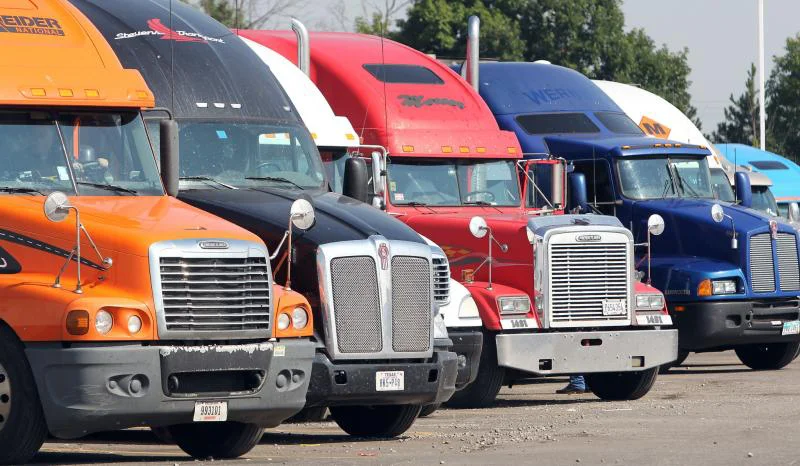The Canadian trucking industry is thriving, boasting over 66 million shipments and generating over CAD 39 billion annually. These impressive figures reveal the vast potential of establishing a trucking enterprise in the country. If you’re passionate about harnessing this potential and starting your own trucking business in Canada, this detailed guide will walk you through the essential steps and considerations.
Table of Contents
Why Consider a Trucking Business in Canada?
Before diving into the how-tos, it’s worth noting the myriad benefits of running a trucking business in Canada. Beyond the lucrative financial returns, owning a trucking company offers greater personal freedom, more private time, and robust growth opportunities. Given these compelling advantages, the decision to embark on this journey becomes even clearer.
1. Laying the Foundations: Strategizing Your Trucking Business
Starting with a robust plan is paramount. It enables you to gauge your readiness, outline your business structure, perform a thorough market analysis, and sketch out your broader strategies encompassing revenue generation, operational procedures, and other critical business facets.
- Defining Your Niche:
-
- Geographical Reach: Evaluate the distance between your base and potential routes, balancing profitability with personal preferences. Short-haul trucking is ideal for those who wish to stay closer to home, whereas long-haul routes offer lucrative earnings but often mean spending extended periods away from family.
- Industry Focus: Understand the specific industries that pique your interest. Whether agriculture, food and beverage, paper production, or oil and gas, you should be enthusiastic and committed to delving deep into its intricacies.
- Industry Expertise: Familiarize yourself with your chosen sector’s goods and logistical processes. Identify the demands and tailor your services to meet those needs more effectively than competitors.
- Competitive Analysis: Survey the landscape and identify companies that have received positive feedback. Understand what they’re doing right and how you can differentiate.
- Identifying Ideal Clients: Clearly define your target clientele based on their characteristics, associated industries, needs, flexibility, and potential challenges.
- Crafting Your Business Plan: A well-articulated business plan is both a roadmap for your operations and a tool to attract investors or secure loans. Devote ample time to jot down your strategies, market analysis, and financial projections. Engaging industry experts can enhance the quality of your plan and increase the chances of securing investment.
- Determining the Business Structure: Whether you opt for a sole proprietorship, partnership, or corporation, each comes with its own set of advantages and implications. Assess each option’s suitability for your long-term goals and operational preferences.
2. Choosing the Right Name for Your Business
Your business name plays a pivotal role in branding and positioning. It should be memorable, remarkable, and resonate with your target audience. Additionally, ensure the name isn’t already in use or too similar to existing businesses by utilizing tools like the Canadian government’s Nuans search tool and checking other relevant databases.
3. Officially Registering Your Business
Kickstart the legal setup by registering your business name with the Canadian government, especially if it’s different from your own. Depending on your chosen business structure, the registration requirements may vary. If you opt for a corporation, the process might be more complex, often necessitating consultation with accountants or corporate attorneys.
If you enjoy this article, don't miss out on the valuable insights and information available in our other related posts:
- Canada Provides Open Work Permit For PNP Candidates 2025: How To Apply Now
- Hungary Launches New Work Visa Laws: What Employers And Candidates Should Know
- Top Skilled Trade Jobs In Canada
- Top Digital Nomad Visas With Zero Taxes In 2025
- US EB3 Work Visa Procedure 2025: Full Guide For Skilled And Unskilled Employees
Also, acquire a business or tax number. This unique 9-digit identifier is crucial for dealings with national agencies regarding taxes, payroll, and more. Further, with the Canada Revenue Agency, you must register for programs like Goods and Services Tax, payroll deductions, fuel charges, and more.
4. Acquiring Necessary Permits and Complying with Industry Standards
Beyond the essential registration, a trucking business in Canada must adhere to specific industry norms and laws. These include the International Fuel Tax Agreement, National Safety Code, Canadian ELD and Hours of Service regulations, Carrier insurance, and many more. Ensure thorough research to stay compliant.
5. Financial Planning: Assessing Startup Costs & Securing Funds
The initial expenses can vary, influenced by factors like the regions you intend to operate in and the services you aim to provide. Key cost elements include:
- Registration and Certification: Consult with local authorities to get precise fee structures.
- Vehicle Acquisition: You can buy new vehicles or opt for older models depending on your budget. You can also start by hiring owner-operators and gradually build your fleet as revenues grow.
- Human Resources: Evaluate the number of employees required for roles like drivers, dispatchers, HR, sales, and accounting. Factor in salaries, benefits, and other related costs.
If funding is a concern, various Canadian government programs offer financial aid, grants, and investment opportunities for new businesses.
In Conclusion
Embarking on a trucking business journey in Canada might seem daunting, but with thorough planning and meticulous execution, the rewards can be immensely gratifying. Take deliberate steps, ensuring you meet all necessary prerequisites, and gradually build towards realizing your entrepreneurial dream in the Canadian trucking landscape.





